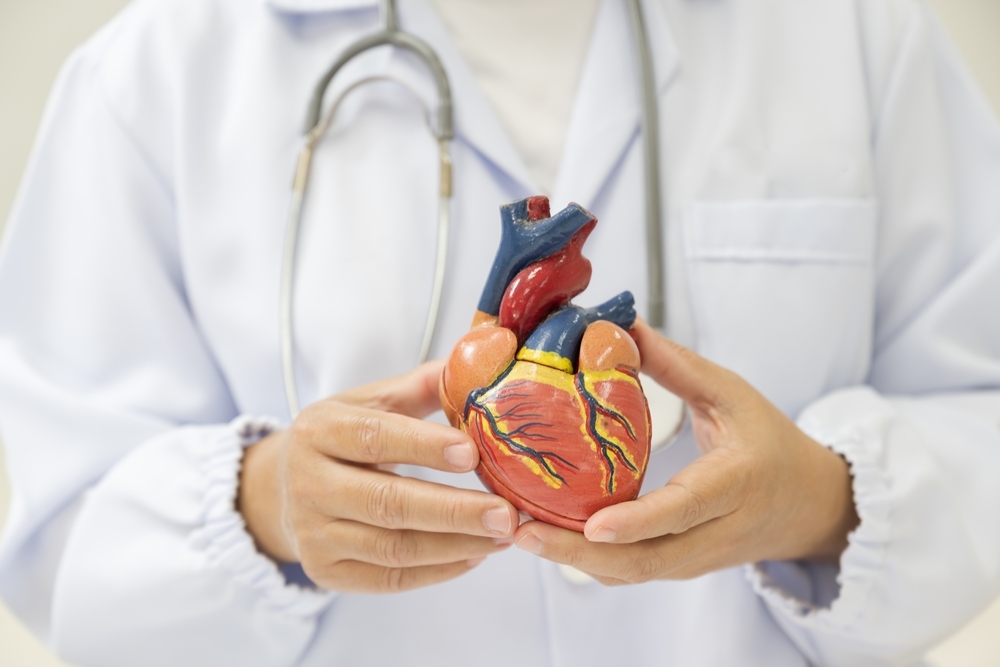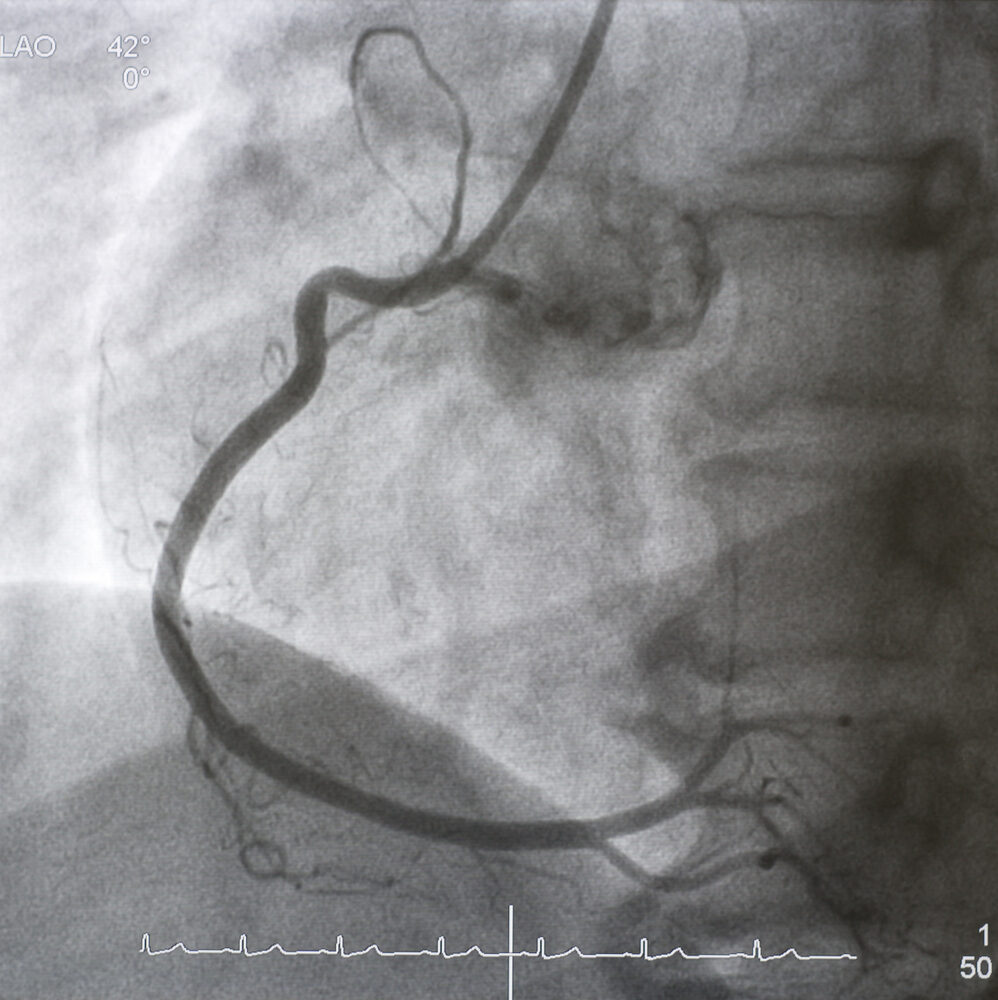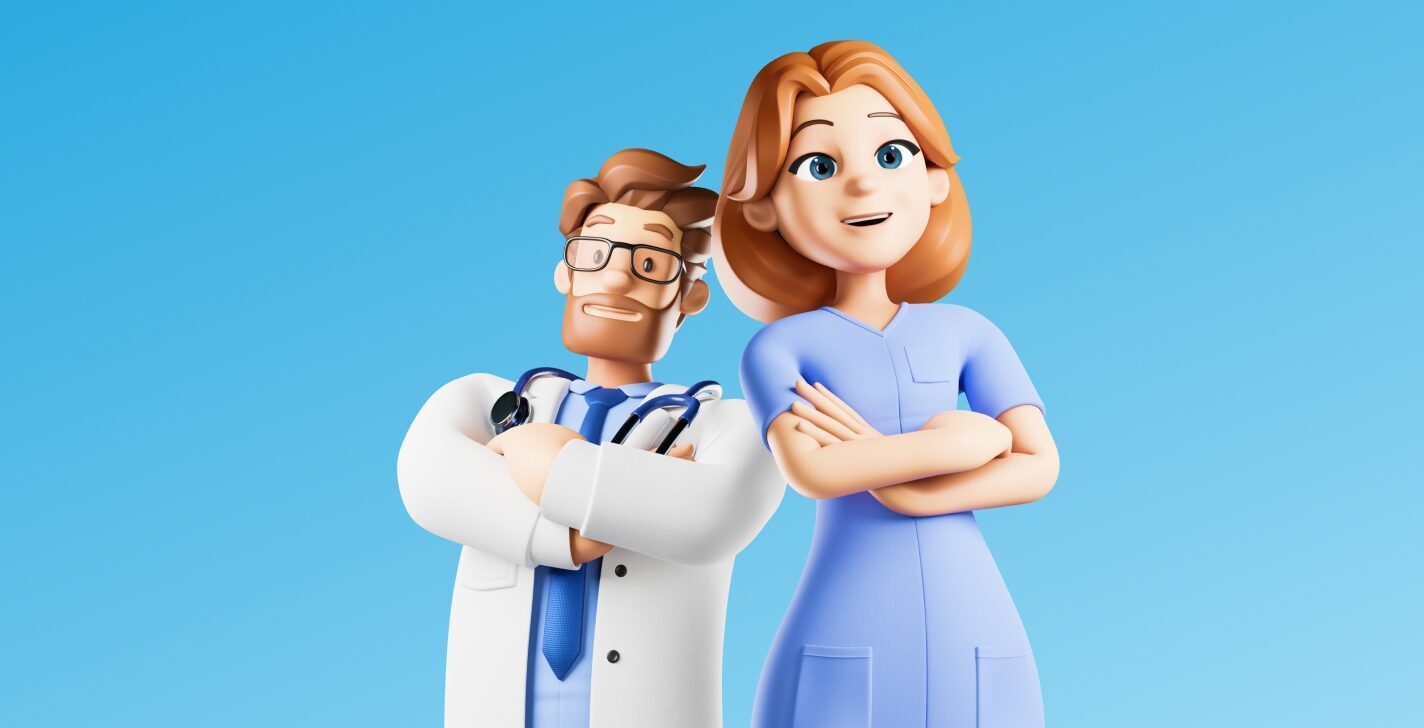
☝️ The most important facts in brief
- Cardiologists are medical specialists who specialise in the diagnosis and treatment of cardiovascular diseases.
- Training to become a specialist in cardiology takes a total of 72 months. A six-year medical degree is required beforehand.
- Cardiology is a branch of internal medicine. You will therefore undergo the regular specialist training for internists and can then specialise as a cardiologist.
- The word "cardia" means "heart". A cardiologist is therefore literally a "heart doctor".
📖 Table of contents
A cardiologist is a specialist in internal medicine who specialises in diseases of the heart and circulation. Their tasks include the examination and care of patients with heart diseases such as heart attacks, cardiac arrhythmias and heart failure. Most cardiologists work in large hospitals, but you also have the opportunity to set up your own practice. In this article, we have summarised what it takes to become a cardiologist and what everyday life in this profession looks like.
Are you interested in studying medicine?
We will be happy to advise you free of charge about your options for studying medicine, including advice on studying medicine in another EU country, which is fully recognised in Germany.
What is a cardiologist?
A cardiologist specialises in the diagnosis and treatment of heart diseases. He is a specialist in internal medicine and also has additional training in cardiology. Cardiologists carry out a wide range of examinations and aim to maintain the heart health of their patients for as long as possible and, if necessary, to restore it as well as possible. To this end, they can use medication and minimally invasive procedures, among other things.
Risk of confusion: Cardiology is not cardiac surgery
It is often assumed that a cardiologist is a heart surgeon, although the two specialisms cover different activities. A cardiologist examines and diagnoses cardiovascular diseases using various examination methods and, if necessary, treats them in a minimally invasive way, for example by inserting stents via cardiac catheterisation.
Cardiac surgeons, on the other hand, open the chest to perform heart operations, such as the insertion of artificial heart valves or bypasses. While cardiologists focus on diagnostic procedures, medication, prevention and, if necessary, minor interventions using cardiac catheters, cardiac surgeons are responsible for surgical interventions on the heart. Both work in the service of heart health, but in different ways.
Even though they are different professions with different training specialisms, the two specialist departments work closely together. They refer patients to each other and advise each other on the best possible treatment.
Examinations of the cardiovascular system
What does a cardiologist do to find out what is wrong with their patient and how they can help them? There is no general answer to this question, as there are many different examination methods in cardiology. We would now like to give you an overview of the most important ones.
ECG
The electrocardiogram measures the electrical activity of the heart and can therefore provide detailed information about the heart of the person being examined. Depending on the type of disease, different abnormalities are present in the ECG, sometimes long before symptoms even appear. ECGs can therefore also be used for early detection.
The heart specialists carry out ECGs in various forms, which we would now also like to briefly explain.
Resting ECG
A resting ECG is a basic examination in cardiology. It measures the electrical activity of the heart in a resting state in order to recognise heart diseases such as cardiac arrhythmia or a heart attack. Cardiologists attach adhesive electrodes to the patient's skin for this purpose. Even at rest, many clinical pictures can be easily recognised so that further examinations and therapeutic measures can then be planned.
Exercise ECG
The exercise ECG goes one step further by examining the heart under physical stress. Patients run on a treadmill or pedal on an ergometer, for example. Cardiologists can thus observe the heart's reaction to physical stress.
This diagnostic procedure is particularly informative in the diagnosis of angina pectoris and other diseases affecting the coronary arteries.
Long-term ECG
The long-term ECG records the electrical activity of the heart over 24 hours or longer. The patient is given a portable device that continuously collects data. This examination also identifies temporary cardiac arrhythmias and other problems that would most likely be overlooked during a brief examination of the heart.
Examination by cardiac catheterisation
Cardiac catheterisation is a minimally invasive procedure in which a thin tube (catheter) is guided to the heart via a blood vessel. The cardiologist uses this method to examine the coronary arteries and identify blockages.
The cardiac catheter can also be used for treatment. For example, it is possible to insert a so-called stent, which keeps the vessel open and thus protects against a heart attack.
Cardiac catheterisation is often decisive in the diagnosis of serious heart disease and the planning of further medical steps.
Cardio-MRI
Magnetic resonance imaging (MRI) provides detailed images of the heart and surrounding structures. Thanks to magnetic fields and radio waves, precise imaging of the organ and its surroundings is possible and the cardiologist can recognise heart valve defects and anatomical anomalies, for example.

Diseases that you will often have to deal with as a cardiologist
As a cardiologist, you deal with a wide variety of heart diseases on a daily basis. Your tasks include both the care of patients with acute symptoms and the long-term monitoring of people with chronic heart disease. Below, we will introduce you to some of the most common problems that affect the heart as an organ and therefore characterise your profession as a cardiologist.
Heart failure
Heart failure, also known as cardiac insufficiency, is a common diagnosis in cardiology. This is when the heart is unable to pump enough blood around the body. Symptoms of heart failure include shortness of breath, fatigue and fluid retention in the legs.
The disease is treated with medication, lifestyle changes and, in certain cases, surgery. The exact treatment depends heavily on the cause, as this can vary greatly in heart failure.
Cardiac arrhythmia
A disturbed heart rhythm can have a variety of causes. The symptoms can range from harmless additional heartbeats - known as extrasystoles - to life-threatening problems.
The therapy depends on the type of cardiac arrhythmia and its severity. If necessary, a pacemaker is used to make the heart beat regularly using electrical impulses.
Heart attack
In this acute event, a blood vessel is blocked so that the heart can no longer be supplied with sufficient blood. This undersupply can lead to permanent damage to the heart. It is therefore important that measures are taken as quickly as possible in the event of a heart attack.
Cardiac catheterisation and immediate treatment play a decisive role in heart attacks. The aim is to remove the blockage in the affected coronary vessel. To do this, the doctor can insert a small balloon into the vessel via the cardiac catheter to widen it (known as balloon dilatation). In addition, the administration of anticoagulant medication is indicated both in the acute situation and to prevent further heart attacks.
Angina pectoris
Angina pectoris is a feeling of pain or pressure in the chest caused by a temporary undersupply of oxygen to the heart muscle. It is often a harbinger of a heart attack and should therefore be taken seriously.
Treatment includes medication to prevent further deposits within the blood vessels and the establishment of as healthy a lifestyle as possible.
Heart valve defects
Heart valve defects can be congenital or acquired. They result in the heart valves no longer being able to regulate the blood flow as they do in healthy people. This leads to a constant backflow of blood into the large veins.
Treatment for valve defects ranges from wait-and-see observation and drug therapy to surgical interventions in which the valves are repaired or replaced.
What does internal medicine have to do with cardiology?
Cardiology is by definition a specialised branch of internal medicine. Specialists in cardiology begin their career after medical school as a junior doctor and then undergo further training to become a specialist in internal medicine.
As a cardiologist, you specialise in a specific area of internal medicine, but the course of your training also requires you to acquire extensive specialist knowledge in other areas. This also makes a lot of sense, because in addition to myocarditis and other heart diseases, many of your patients will also have one or two diseases from other areas. As a doctor in cardiology, you must therefore also be able to deal with these.
Many tests, such as long-term blood pressure measurement or a day-night blood pressure profile, are not exclusively reserved for cardiologists, but are also used in other internal medicine specialities. It is therefore important to always bear in mind that certain results do not automatically indicate a cardiological disease, but that various differential diagnoses are also possible.
How to become a specialist in cardiology
If you have decided to become a cardiologist, you must first Study medicine and then complete the 72-month specialist training programme.
Medical studies
The degree programme in human medicine lasts 6 years and ends with the state examination. During your studies, you will acquire in-depth knowledge of the human body, various specialisms and, of course, the importance of the heart and its function.
Once you have completed your practical year and passed your state examination, you will be allowed to work as a doctor in a clinic.
Training as a specialist in internal medicine
Cardiologists are internists with additional training in cardiology. It is therefore necessary to complete the entire specialist training programme for internists. In the meantime, you can continue your specialisation in cardiology at the same time. Specialist training is part-time while you work as a junior doctor in the clinic.
Cardiovascular diseases and more: specialisation in cardiology
The basic training is followed by specialisation in cardiology. After a total of 72 months, you will have made it: you will pass an examination and become a cardiologist. A wide range of fields and positions as a senior physician or even head physician are now open to you.
What does a cardiologist do after he has finished his specialist training?
There is no generalised answer to this question. Most cardiologists decide in favour of a career in a large clinic. However, you also have the option of opening your own practice or working in a group practice.
You will most likely not be unemployed, as cardiologists are desperately sought after throughout Germany.
Free information material
Studying medicine abroad 🎉
Order your info pack now, find out more about the Studying medicine abroad and get started as a medical student!





